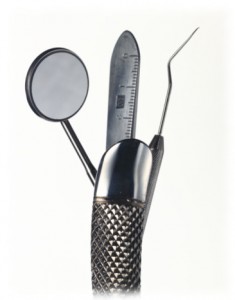
Quite often, before even starting an orthodontic treatment, patients have no real idea on treatment time. Some imagine they can adjust their teeth in a few months, others fear having 7 to 8 years long treatment. How is it actually today?
20 years ago, national average treatment time was 3 years without retention afterwards. Right now it is 2 years and a half for active treatment (when teeth are moving, mostly with braces). However, a retention phase of 1 year is systematic afterwards.
These treatment durations aren’t always announced by the practitioner when treatment starts. They are held, most of the time by qualified specialist practitioners according to a Social Security study. In our clinic, average treatment time is a year and a half, followed by one year retention in order to guarantee stability.
What will influence treatment time?
Indeed what has to be treated!

Practionner technique also plays also an important part.
Whether permanent teeth extractions are needed or (treatments with extractions are generally a bit longer than without extractions).
Whether treatment is done during adolescence with permanent teeth or is a 2 phases tretament (phase I at 7-8 years then phase II with permanent teeth: treatment time is added up).
Finaly motivation techniques employed by the practitioner will make the difference. Because what makes 90% treatment success and therefore treatment time is: patient compliance, whatever technique is being used!
All orthodontists agree on one thing: key factor throughout time is patient compliance. During each visit we carefully fix appliances but the person who will be maintaining this precious device will be the patient each and every day. Everything relies on him from one appointment to another.
So clearly the more the patient is complying throughout treatment the more his treatment will be successful, regardless of the practitioner.
However practitioner duty is to stimulate, encourage and support this motivation.
This is the reason why in our clinic, we consider ourselves more as coaches rather than expert practitioners. It is a trend within the profession which, we hope, will develop. Patients who become actors of their own treatment necessarily shorten their treatment time.
Furthermore, for the last 20 years there is trend in orthodontics to shorten treatment time, thanks to new technology (self ligating braces, non extraction treatment, coaching patients).
One last key element will be choosing when to start treatment.
Choosing the right age to start a treatment will influence its duration. Starting a treatment when most baby teeth are still present is not necessarily useful and requires to be cautious (Cf. our article about it). Sometimes parents concern puts pressure on the practitioner to start treatment very early when natural and favourable evolution can be expected or simply when arising problem might be solved later on in a much quicker and global way. At times you have to know to stay passive.
In our clinic we deal with patients motivation as a precious gift and have a special concern about not starting treatments early if we are not sure it doesn’t shorten global treatment time.

Aside from these purely technical realities, some very subjective elements get on the way when we talk about treatment time in orthodontics. Orthodontic age is mainly during adolescence, when time perception is very different from the one we may have at adulthood. A 18 months treatment might seem extremely long for a teenager for whom adolescence takes only 3 to 4 years.
All is very relative in each one’s time perception. Is a18 months treatment long in a life time? No, but it seems long when having other things in mind.
In our clinic we try to be as much transparent as possible, giving treatment duration from start: it is a demanding choice which makes us committed.
When in 5% cases it is necessary to extend target time, treatment might seem very long to the patient, even if time will be clearly shorter than national average. It is very uncommon for us to exceed 2 years and a half time, but the 6 extra months might be perceived at times as very heavy.
Some practionners prefer not to give any target time to avoid pressure. We did not make that choice, on the contrary, in order to motivate patients towards specific and reachable goal, even it has to be adjusted if obstacles come on the way.
This enables generally the patient to stay motivated and shorten treatment time. But is very demanding!
Another subjective thing is the cumulative effect. Indeed, patients, from the day they started phase I treatment, even if it lasted 6 months, stopped foris3 to 4 years before phase II, have this sense of still wearing an appliance althrough, even if it was not the case. Some patients speak about 7-8 years treatments when hey have been actually wearing an appliance for only 1 year and a half or 2 years over that period. Getting first appliance give the patient an impression of “going into orthodontics and never coming out of it”. This makes the orthodontist extremely cautious about early treatment. Even if the treatment is well accepted at this age, psychologically for the patient, treatment doesn’t stop! When starting phase II during adolescence, his motivation is quite reduced precisely when most needed.
And last but not least, how can we talk about treatment time without talking about Social Security? French national health assurance system is based on treatment semesters, that is duration. This system has been existing for more than 30 years and unfortunately it encourages long treatments: the longer the treatment, the higher refund the patient gets, the more the practitioner gets paid. Because billing is based on duration (by semester) rather than means being used.

It is hard to swim against the stream. However in our clinic we try to do it promoting global treatment cost concept freeing ourselves from semesters billing. For us, the patient must stay motivated and pay for a final goal, not for treatment semesters paid back by Social Security.
In our clinic, our chore belief is that treatments must remain as short as possible. Currently existing orthodontic appliances allow to shorten average treatment time up to 18 months (followed of course by a year of follow up or “retention year”). The patient must remain the focus of our therapy. His motivation is treatment’s fuel. It must be kept as the most precious gift. We are here to guide him up to finish line at the best of his energy all through treatment.
There is no taboo around treatment ending time at the clinic. Do not hesitate to ask about it ! It is an opportunity to take time and rebuild motivation for a common purpose. The whole team is there for that in our clinic.
This website gives access to general information about orthodontic treatments. It is not meant to replace personal patient / practitioner relationship that you will get in our clinic.